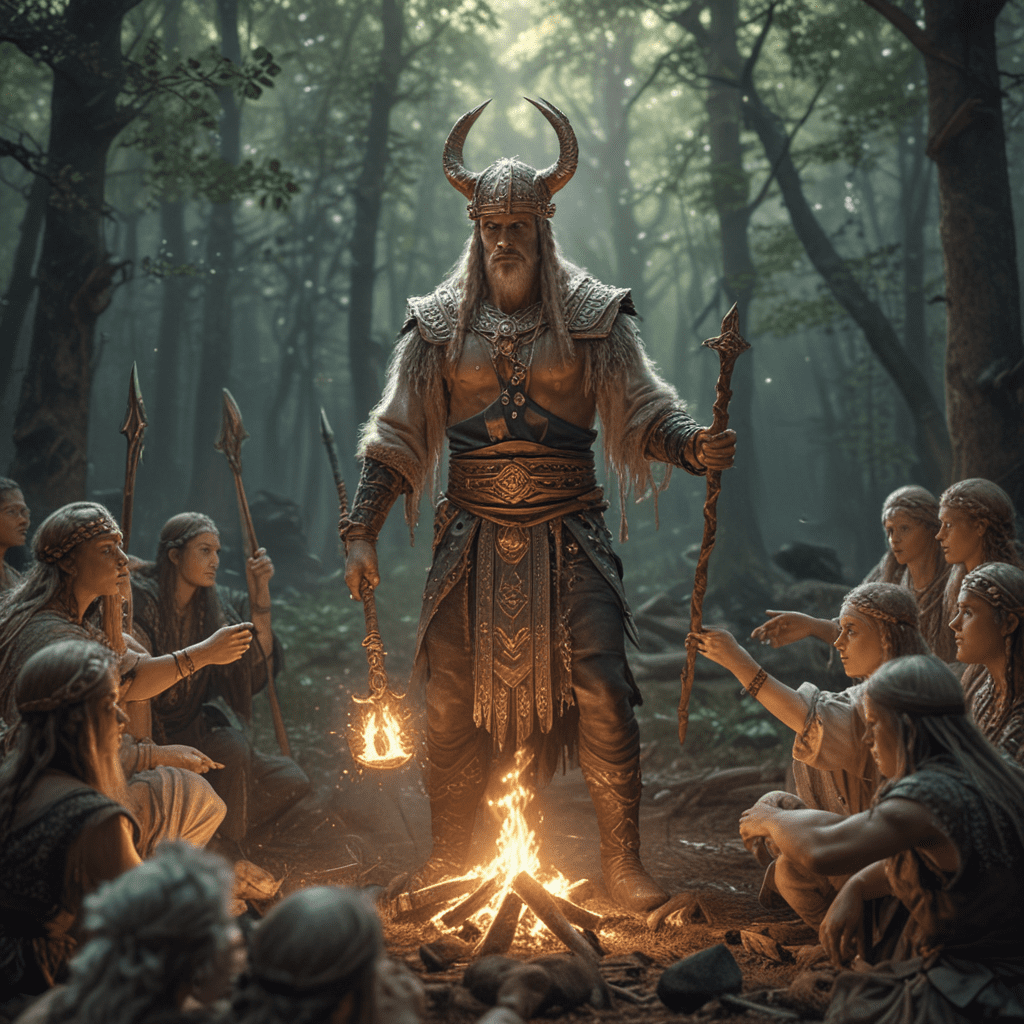Slavic Worldview and Belief System
Slavic mythology, a rich tapestry of beliefs and practices, emerged among the Slavic people of Eastern Europe. Their worldview centered around the concept of duality, with the universe divided into two realms: Prav (right, order) and Nav (wrong, chaos). The Slavic pantheon consisted of a hierarchy of deities, spirits, and mythical creatures, each embodying specific aspects of nature, society, and human experience.
Deities and Spirits in Slavic Mythology
At the apex of the Slavic pantheon stood Rod, the creator god of all existence. Other significant deities included Perun, the god of thunder and lightning; Veles, the god of the underworld and magic; and Mokosh, the goddess of fertility and fate. Alongside these major deities, a vast array of lesser spirits inhabited the Slavic cosmos. These included fairies, goblins, and house spirits, each with their unique abilities and roles within the natural and supernatural realms.
Sacred Festivals and Seasonal Observances
Seasonal festivals played a vital role in Slavic religious life. The winter solstice marked the festival of Koliada, honoring the return of the sun. Kupala, celebrated during the summer solstice, celebrated fertility and purification through rituals involving bonfires and water. Other important festivals included Maslenitsa (Pancake Week), honoring the end of winter, and Radonitsa, honoring the dead.
Rituals of Life and Death
Slavic rituals encompassed all stages of life and death. Birth, marriage, and death were marked by specific ceremonies and customs designed to ensure the protection and well-being of individuals and the community. Funeral rituals played a significant role in guiding the deceased into the afterlife, often involving elaborate lamentations, feasts, and the placing of grave goods with the departed.
Animal Symbolism and Totemism
Animals played a profound role in Slavic mythology, often serving as symbols of deities and spirits. The bear, for instance, represented strength and ferocity, while the wolf was associated with cunning and intelligence. Totemic beliefs, linking individuals and families to specific animals, were also prevalent in Slavic culture.
Folklore and Slavic Beliefs
Slavic folklore, a vast collection of tales and legends, served as a reservoir of mythological beliefs and customs. Through stories passed down through generations, the Slavic people preserved their worldview, explaining the origins of the world, the nature of the gods, and the challenges faced by humanity. Baba Yaga, the witch of Slavic folklore, is a notable example of a mythological figure who embodies both fear and wisdom.
Influence of Christianity on Slavic Mythology
The arrival of Christianity in Eastern Europe had a significant impact on Slavic mythology. Over time, certain pagan deities and spirits were assimilated into Christian beliefs, taking on new roles within the Church's mythology. The veneration of saints, for instance, often blended with traditional veneration of Slavic gods.
Modern Interpretations and Revivals
In recent times, there has been a resurgence of interest in Slavic mythology. Modern-day practitioners have sought to revive ancient rituals and beliefs, adapting them to contemporary contexts. Slavic neopaganism, for example, embraces elements of pre-Christian Slavic mythology while incorporating modern understandings of spirituality and nature.
Conclusion: Enduring Legacy of Slavic Rituals and Traditions
The sacred rituals and traditions of Slavic mythology have left an enduring mark on the cultures of Eastern Europe. From festivals honoring the seasons to beliefs about animal symbolism, these practices continue to resonate with individuals seeking connection to their ancestral heritage and to the spiritual dimension of life. Whether expressed through folklore, modern interpretations, or the preservation of ancient customs, the legacy of Slavic mythology remains a vibrant and enduring force today.
Frequently Asked Questions (FAQs)
Q: Who was the creator god in Slavic mythology?
A: Rod
Q: Which festival was celebrated during the summer solstice?
A: Kupala
Q: What animal represented strength and ferocity in Slavic mythology?
A: Bear
Q: What was the name of the witch in Slavic folklore?
A: Baba Yaga

